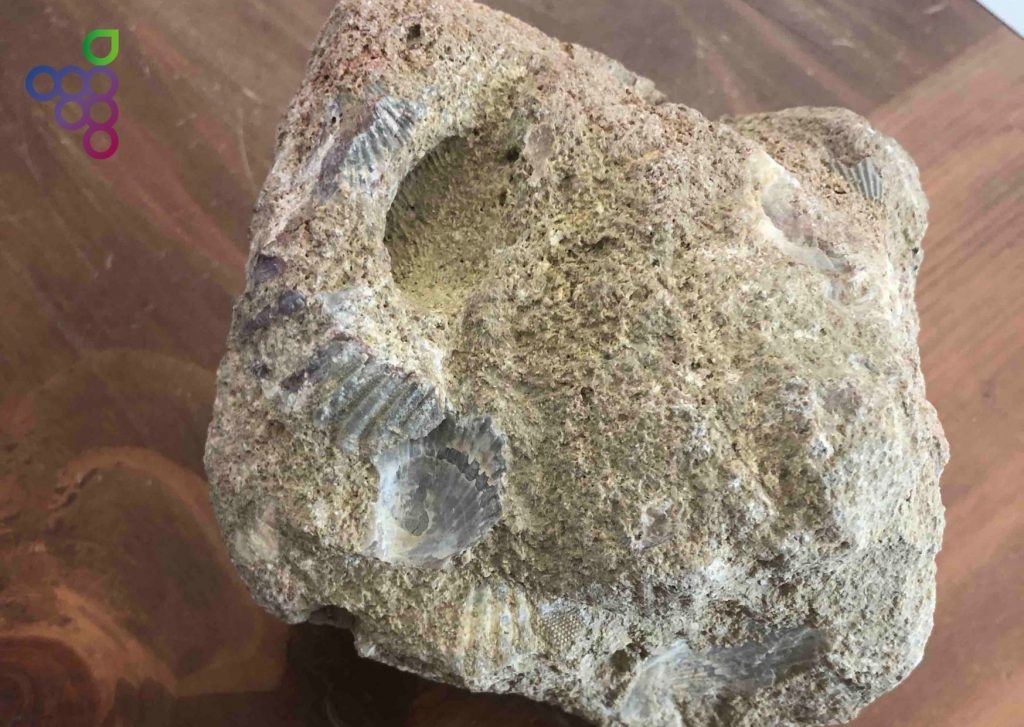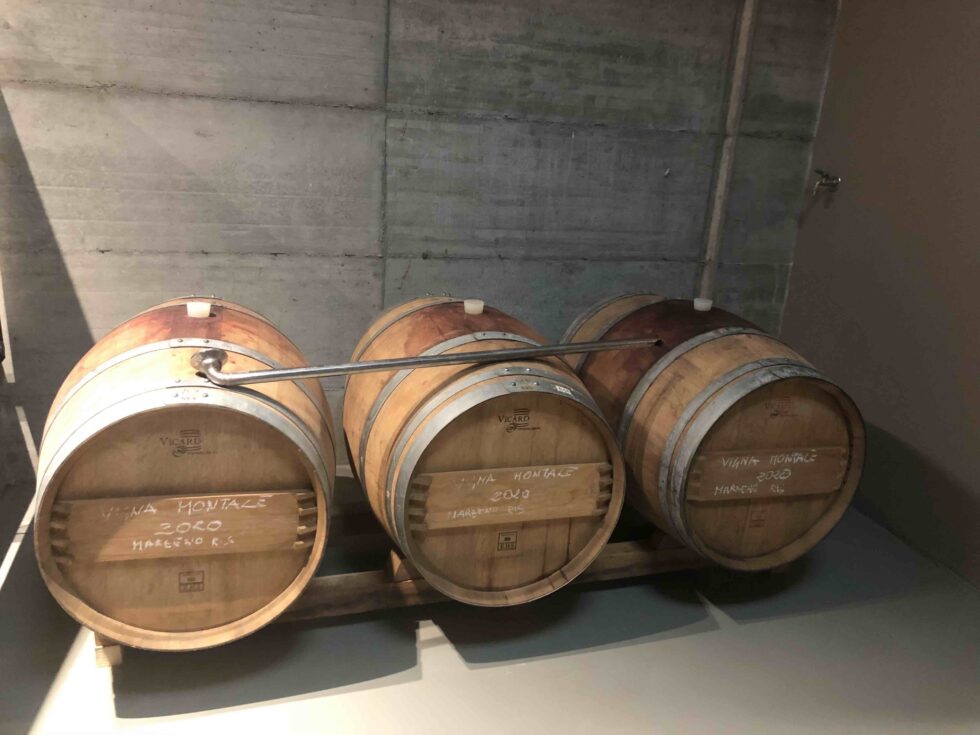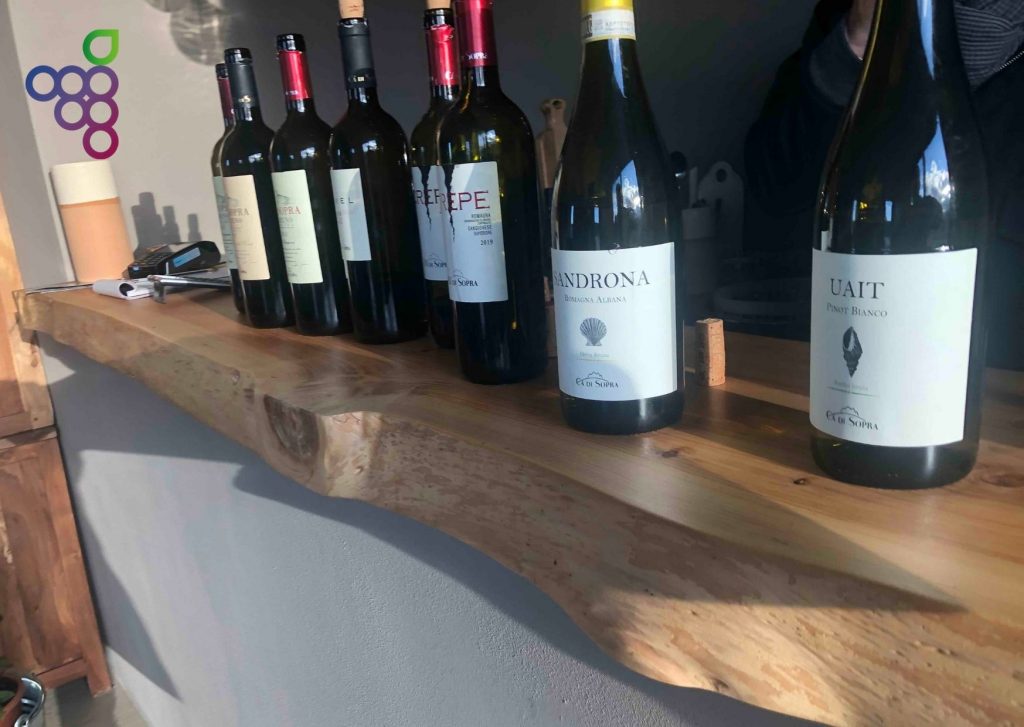Marzeno: Between Calanchi and Sangiovese
A couple of weeks ago, the COVID “traffic light” turned yellow and the municipal restrictions became regional. A glimmer of hope: “I’ll be finally able to visit some production companies and get to know interesting wineries to pass on to my customers.” Fortunately my region, Emilia Romagna, boasts many exceptional companies and an ampelographic heritage of respect.
Per leggere questo articolo in italiano, scorri verso il basso. 👇🏼
We headed to Faenza area to breathe some of the great atmosphere of Romagna, in search of Romagna’s gold: Albana.
It is worth remembering that Marzeno is one of the 12 municipalities worthy of Additional Geographic Definitions, for what concerns the addition to the label of Romagna Sangiovese DOC.

Travelling to Marzeno
It was a last minute trip. With minimum notice and little hope, we called the company. Camillo Montanari replied and welcomed us to the company with extreme kindness.
On arrival, what I like to do most is to look around. Here the landscape is one of the most evocative: we are a stone’s throw from Tuscany and Chianti. Here the territory is truly Chiantly with cypresses and wood that intersperse the viticulture, giving biodiversity and specular characteristics to those of the Tuscan cousins. It is not for nothing that it is considered one of the most important areas for the cultivation of Sangiovese.
Not only that, but also of Albana. Here, in fact, is found one of the most important companies for the production of the white Romagna grape: Fattoria Zerbina. An added big name is Paolo Francesconi — another great interpreter of these vines, just to testify how favorable the territory is.
Unfortunately, not many others (that allocate a large part of the production to cooperative wineries) vinify these gems given by the Marzeno territory.
Ca di Sopra
Camillo immediately began to tell us how much he and his brother believe in the area. It’s a family story like many others with agricultural holdings. He took over his father’s farm and started his own production in 2006. It is a young company with respect to wine-making, but was consolidated in regards to viticulture, as the father cultivated and sold to the cooperative winery.
The typical cultivation of this area, namely kiwis, is concentrated in the softer areas and at the bottom of the valley. The hardest part (and at high altitude: 100-180 meters above sea level) is destined to produce quality viticulture. Important quantities of limestone enrich the clear clays, of marine origin, allowing the vine to go into stress and give quality grapes.
The company is divided into 2 estates: Podere Ca del Rosso and Podere Ca di Sopra. The first has vineyards facing north, while Ca di Sopra (so called because it is located above Ca del Rosso) has a double exposure: north and south-east. The company stands on a total of 52 hectares, 26-27 vineyards, but only 9 are vinified. The others produce grapes will be transferred to the cooperative winery. Among the vinified varieties are: Albana, Sangiovese, Cabernet Sauvignon, Merlot and Pinot Blanc (a rarity given the area).
Viticulture is in conversion to organic, but given the territory and its microclimate, human intervention is still at a minimum, already avoiding weeding among other things.
In Marzeno, Monte Cepparano plays an important role. It protects the area from the cold winds coming from the Apennines, therefore creating a unique microclimate.
All this seems to be the perfect recipe for quality raw material and an excellent drink.
Let’s go to the cellar

After telling us a little about the whole production philosophy, Camillo took us to the actual cellar. It is very intimate…you can breathe the attention and soul that Camillo and Giacomo put into their wines.
The containers for mashing and fermentation are made of steel. After those procedures, it is decided, in the case of Sangiovese, which ones will be vinified alone and which ones will be used for blending (Remel – Sangiovese and Cabernet Sauvignon).
Many of their wines end their aging period in steel. This is the case of the most important wines for the company. However, there is also room for wood such as the Cadisopra Marzeno Sangiovese, which entrusts its ‘elevage’ to 12 months of tonneaux.
Among the curiosities in the cellar, there is a historical archive, namely a vault with the first bottles produced and all subsequent years.
At the tasting table
As usual, we go to the tasting. Camillo is keen to transmit their work to the end, giving us the pleasure to try all his wines. I report, as in all of my trips, the two wines that impressed me most:

Albana Sandrona 2019
The Albana Sandrona 2019 was the second wine we tasted following the easy to drink Uait, their pinot blanc. Its name comes from the vineyard of the same name. It results from the skillful assembly of a substantial part (80%) vinified in white combined with 20% of Albana macerated on its skins for about 6 days. It does not age in wood.
All this translates into a chromatically a more intense, but shiny Albana. It has a multifaceted aroma: yellow flowers, citrus, mentholated tones and fragrant references. The palate, in my opinion, is the strong point: a fairly consistent entry, but with an acid-tannic synergy that manages to bring everything back to a good balance making it an elegantly gastronomic wine.
Cadisopra Romagna Sangiovese Marzeno 2018
Here we get our hands and glass on the main product of these areas — the Sangiovese from the Marzeno subzone. The company produces a ‘base’ and a Riserva. What struck me most was the first one: the wine is ready to drink and particularly appealing. In my opinion, the Riserva will need a little more time to be able to fully express its potential.
The grapes are selected from three vineyards, fermented in steel and then aged for 12 months in tonneaux. But what strikes me most about this Sangiovese is the long maceration: 90 days! The wine is concentrated and consistent, with a fascinating bouquet which is enriched with bitter and aromatic herbs, dark spices, then lots of fruit. It is full-bodied and has an aggressive tannin that does not trivialize it, but rather enhances it. A double choice wine: let it mature in the cellar or, what I personally prefer, enjoy right away!
Tra vigne e di cantine: viaggi di vino
Marzeno, tra calanchi e sangiovese
Il semaforo, almeno a un paio di settimana fa, diventa giallo, la limitazione comunale diventa regionale. Un barlume di speranza per poter visitare qualche realtà produttiva e poter conoscere interessanti realtà da trasmettere ai miei clienti. Fortunatamente la mia regione, Emilia Romagna, gode di tante realtà eccezionali e di un patrimonio ampelografico di tutto rispetto.
Partiamo alla volta del faentino per poter respirare un pò di aria romagnola, alla ricerca dell’oro di Romagna: l’albana.
Senza dimenticarci che quello di Marzeno è uno dei 12 comuni meritevoli di MGA (menzione geografica aggiunta) per quel che riguarda l’aggiunta in etichetta al Romagna Sangiovese DOC.
In viaggio per Marzeno
Un viaggio deciso all’ultimo. Con il minimo di preavviso e speranza chiamiamo in azienda, ci risponde Camillo Montanari, disponibilissimo ci accoglie in azienda con estrema gentilezza.
All’arrivo quello che mi piace fare di più è guardarmi intorno. Qui il paesaggio è dei più suggestivi: siamo a due passi dalla Toscana, dal Chianti, e qui il territorio è veramente chianteggiante con questi cipressi e questo bosco che inframezzano la viticoltura, donando biodiversità e caratteristicità speculari ai cugini Toscani. Non per nulla questa viene considerata una delle zone più importanti per la coltivazione del sangiovese. Ma non solo, anche dell’albana, da queste parti infatti si trova una delle realtà più importanti per quel che riguarda la produzione di questa bacca bianca romagnola: Fattoria Zerbina. Altro grande nome è quello di Paolo Francesconi, un altro grande interprete di questi vitigni. Così per testimoniare quanto il territorio sia vocato.
Purtroppo non sono molti altri a vinificare queste gemme che il territorio di Marzeno dona, destinando gran parte della produzione alla cantina sociale.
Ca di Sopra
Camillo inizia subito a raccontarci quanto lui e suo fratello credano nella zona. Una storia, come molte nella aziende agricole, di discendenza, subentrando al padre e iniziando la produzione propria nel 2006. Una realtà giovane per quel che riguarda la vinificazione, ma consolidata per quel che riguarda la viticoltura, in quanto il padre coltivava e vendeva alla cantina sociale.
Nelle zone più morbide e a fondovalle si concentra la coltivazione tipica di questa zona, ovvero i kiwi. Nella parte invece più dura e in quota (100-180 metri s.l.m.) viene destinata la viticoltura di qualità. Quantità importanti di calcare vanno ad arricchire le argille chiare, di origine marina, permettendo alla vite di andare in stress e donare uva di qualità.
L’azienda si divide in 2 tenute: Podere Ca del Rosso e Podere Ca di Sopra. Il primo ha vigne esposte a nord, mentre Ca di Sopra (chiamato così proprio perché si trova al di sopra di Ca del Rosso) ha la doppia esposizione: nord e sud-est. L’azienda si erge su un totale di 52 ettari, 26-27 vitati, ma vinificati solo 9. Gli altri producono uve che verranno conferiti alla cantina sociale. Tra le varietà vinificate ci sono: albana, sangiovese, cabernet sauvignon, merlot e pinot bianco (una rarità vista la zona).
La viticoltura è in conversione al biologico, ma visto il territorio ed il suo microclima, l’intervento dell’uomo è tutt’oggi al minimo, già evitando il diserbo tra l’altro.
A Marzeno gioca un ruolo importante il Monte Cepparano, che protegge dai venti freddi provenienti dal freddo Appennino e quindi regalando un microclima unico.
Tutto questo sembra proprio la ricetta perfetta per la raccolta di una materia prima di qualità e una bevuta eccellente.
Scendiamo in cantina
Dopo averci accomodato e raccontato un po’ tutta la filosofia produttiva, Camillo ci accompagna nella cantina vera e propria. Molto intima, ma dove si può respirare l’attenzione e l’anima che Camillo e Giacomo mettono nei loro vini.
Acciaio i contenitori per l’ammostamento e fermentazione. Dopo di che si decide, nel caso del sangiovese, quali saranno destinati a diventare puri e quali verranno utilizzati per i loro vini da blend (Remel – Sangiovese e Cabernet Sauvignon).
Molti dei loro vini terminano il loro periodo di affinamento in acciaio. E’ il caso dei vini più importanti per l’azienda, ma ce spazio anche per il legno, come per esempio il “Cadisopra” Marzeno Sangiovese, che affida il suo “elevage” a 12 mesi di tonneaux.
Tra le curiosità, in cantina è presente un “archivio storico”, ovvero un caveau con le prime bottiglie prodotte e tutte le annate successive.
Al banco di assaggi
Come di consueto andiamo all’assaggio di diverse tipologie. Camillo ci tiene a trasmetterci fino in fondo il loro lavoro, concedendoci il piacere di mettere il calice sotto ad ogni suo prodotto. Riporterò, come in ogni mio viaggio, i due vini che più mi hanno colpito.
Albana “Sandrona” 2019
Arriva al calice come secondo assaggio, succedendo al beverino “Uait”, il loro pinot bianco. Quest’albana, chiamata “Sandrona”, proviene dall’omonima vigna. Frutto di un sapiente assemblaggio di una parte consistente (80%) vanificata in bianco, unita ad un 20% di albana macerata sulle sue bucce per circa 6 giorni. Non vede legno.
Il tutto si traduce in un’albana cromaticamente più intensa, ma lucente. Dal naso sfaccettato: fiori gialli, agrumi, toni mentolati e rimandi fragranti. Il palato a parer mio è il punto forte, ingresso di discreta consistente, ma con una sinergia acido-tannica che riesce a riportare tutto ad un bell’equilibrio e a renderlo un vino elegantemente gastronomico.
Cadisopra Romagna Sangiovese Marzeno 2018
Ecco che qui mettiamo le mani, e il calice, sul prodotto principe di queste zone, il sangiovese sottozona Marzeno. L’azienda ne produce due, un “base” e una riserva. Quello che più mi ha colpito è il primo e probabilmente anche per la sua più pronta beva, a parer mio la riserva avrà bisogno di un’altro po’ di tempo per poter esprimere al meglio le sue potenzialità.
Le uve vengono selezionate da tre vigne, fermentate in acciaio per poi affinare 12 mesi in tonneaux. Ma la pratica che più mi colpisce di più di questo sangiovese è la lunga macerazione: 90 giorni!
Il vino si presenta concentrato, consistente, con un bouquet affascinante, che si arricchisce di erbe amare e aromatiche, spezie scure, poi tanta frutta. Di corpo, tannino graffiante che non lo banalizza, tutt’altro lo valorizza. Vino dalla doppia scelta: lasciarlo maturare in cantina o, quello che preferisco, goderne già da subito!
All photos courtesy of Matteo Zanni.
Read more articles written in both Italian and English…
Torta di Pasqua: una versione moderna
Felix Jermann: nato per rompere gli schemi nel mondo del vino
Cinque mercati italiani da non perdere

